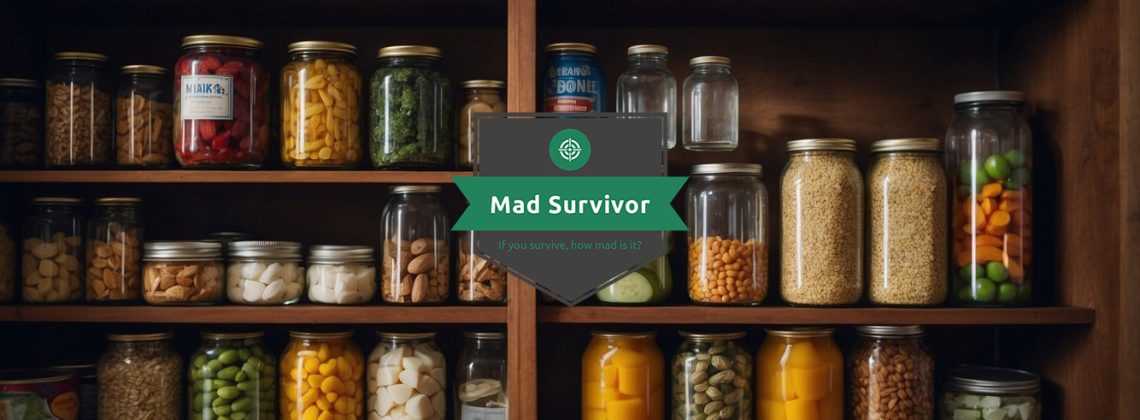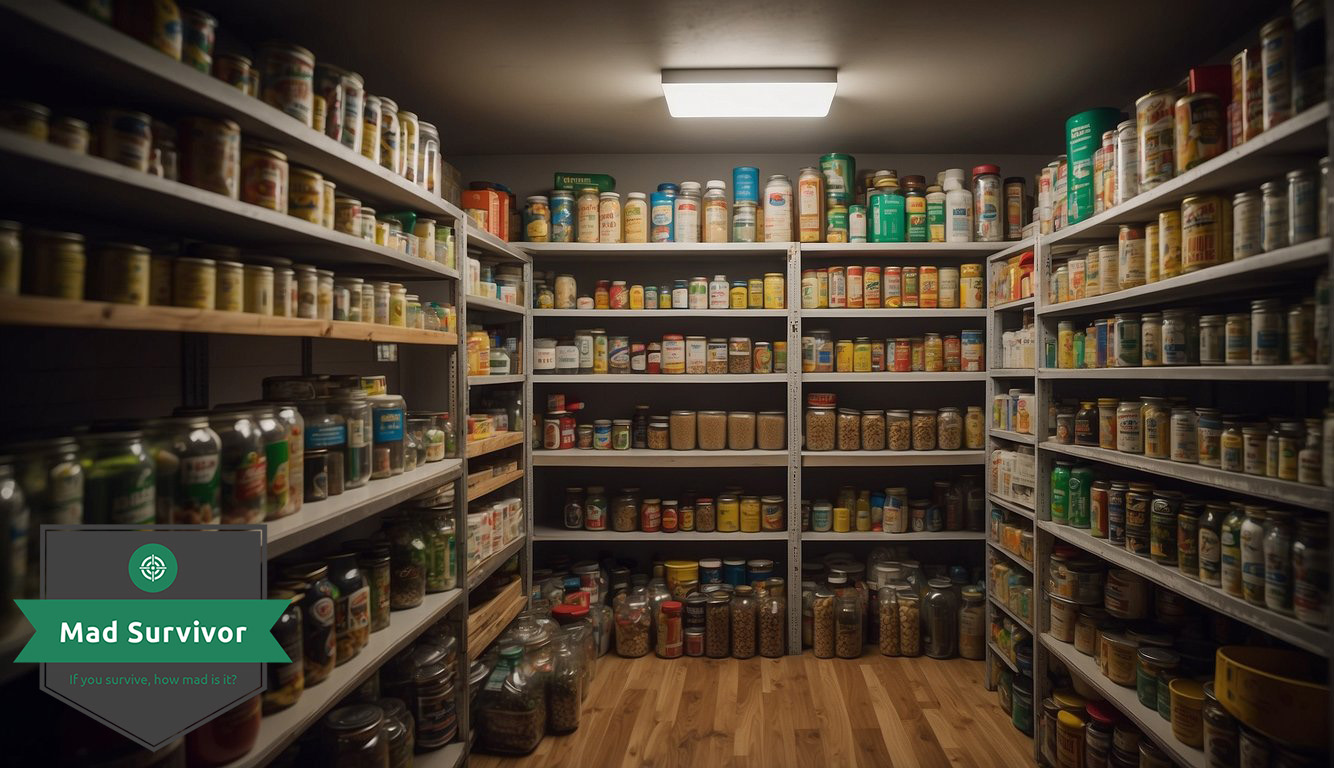
In times of uncertainty, having a prepper stockpile is like holding a silent promise of security. Whether it’s economic instability, natural disasters, or other unforeseen events, your cache of essentials could be vital. However, the key to its effectiveness may lie in its concealment. Learning to stash your supplies creatively ensures they remain safe and undisturbed until they’re needed.
Storing your stockpile isn’t just about finding space; it’s about peace of mind. It’s understandable to worry about your supplies being discovered by others. By integrating clever hiding techniques into your home’s existing structure and furniture, you can keep your stockpile both accessible to you and hidden from plain sight. Transforming commonplace items into secret storage solutions blends your provisions seamlessly into daily life, making your preparedness efforts discreet and practical.
Understanding the Importance of Stealth in Prepping

In prepping, remaining inconspicuous can protect you and your resources. Here’s what you need to consider.
The Risks of Discovery
If your stockpile is discovered, you may face various risks that include theft, damage, or unwanted attention. Thieves are often on the lookout for homes that contain valuable items, and a stockpile of supplies can be incredibly tempting when times are hard. Moreover, if a disaster strikes, and neighbors become aware that you have a significant amount of resources while others have little to none, your safety might be compromised by those desperate to acquire supplies.
- Theft: Opportunists may target your supplies if they’re visible.
- Safety: Exposure can lead to potential confrontations.
- Privacy: Preserving your privacy can prevent a myriad of issues stemming from public knowledge of your resources.
Advantages of Being Discreet
Maintaining a low profile with your prepping efforts offers several benefits. Firstly, it can maintain the peace and normalcy of your daily life by avoiding unnecessary scrutiny. Moreover, in times of scarcity, having a hidden stockpile means you have the leverage to help others on your terms, rather than under pressure or threat.
- Provides peace of mind, knowing your supplies are concealed.
- Ensures you can assist others without coercion.
- Preserves normalcy in your daily life by avoiding unwarranted attention.
Selecting the Ideal Locations

When preparing to conceal your stockpile, choosing locations that blend naturally into your environment is crucial for maintaining discretion.
Indoor Hiding Spots
Behind Existing Fixtures: Transform a common bookshelf or mirror into a secret compartment by adding a hinge or sliding mechanism. Ensure it matches your room’s decor for seamless integration.
Under Furniture: Elevate your bed or other large furniture with risers to create concealed storage space beneath. This area is perfect for items you need to access quickly but don’t use daily.
Outdoor Concealment Methods
Garden Disguises: Consider burying weatherproof containers in your garden. Disguise them with removable planters or scattered mulch to keep them out of sight yet accessible.
Landscape Features: Use existing landscape features, such as hollowed-out fake rocks or false drainage pipes, to store small caches of items. These should blend easily with your garden or yard’s natural appearance.
Offsite Storage Alternatives
Rental Units: Rent a storage unit to keep part of your stockpile offsite. Choose a unit with strong security measures and ensure it’s within a reasonable distance for emergencies.
Trusted Friends or Family: If you have someone you trust implicitly, consider coordinating with them to store some supplies at their home. This diversifies your stockpile and reduces risk of loss due to local disasters.
Using Decoys to Mislead

In preparing for emergencies, one clever strategy is to set up decoys to protect your real supplies. Decoys can confuse and deter potential looters, keeping your genuine stockpile safe.
Creating Convincing Decoys
- Appearance: Your decoys should look like something valuable. For example, a box labeled “Emergency Food” filled with non-essentials could divert attention from your real food supply.
- Plausibility: Place your decoys in locations where someone might expect to find supplies. A convincingly placed decoy will make it seem like they’ve stumbled upon your stash.
- Variety: Use different types of decoys to cover various items in your stockpile. Old electronics can serve as a decoy for power supplies, and empty cans could mimic a cache of food.
- Accessibility: Make your decoys easy to find, but not too conspicuous. If looters feel they’ve made an effort to discover something, they’re less likely to keep searching.
Incorporating Camouflage Techniques

When hiding your stockpile, blending into the surroundings is crucial. The aim is to make your supplies virtually undetectable to others.
Natural Camouflage
Utilize elements from nature to conceal your stockpile effectively. For example:
- Underground Caches: Bury supplies in weatherproof containers. Cover with natural debris like leaves and branches to blend with the surrounding soil.
- Vegetation Covers: Hide items within dense brush or under low-hanging tree limbs. Ensure they match the local flora to avoid drawing attention.
Artificial Camouflage
Create man-made disguises that look ordinary at a glance. Consider these methods:
- Furniture with Hidden Compartments: Modify tables or chairs to include concealed spaces.
- False Walls or Panels: In basements or garages, construct a wall that conceals a recessed area or use a panel to hide a storage space behind it.
Inventory Management and Maintenance

Effectively managing and maintaining your stockpile is crucial. You need to know what you have, where it is, and ensure it remains in good condition for when you need it.
Regular Stockpile Checks
Conduct monthly checks to verify expiration dates and the condition of items in your stockpile. Use a simple tracking method:
- Item Name
- Quantity
- Expiration Date
- Last Checked Date
Rotate items close to expiration into your regular usage and replace them to maintain freshness. Always update your inventory list after checks to reflect any changes.
Pest-Proofing Your Supply
Your supplies are only good if they’re safe from pests. Keep your stockpile in sealed containers; glass and metal are ideal as pests can’t chew through them. For bulk items like rice or flour, consider using food-grade buckets with tight-fitting lids.
Regularly clean your storage area to prevent pest-attracting residues. If you opt for chemicals or traps to deter pests, ensure they’re placed safely away from your supplies to prevent contamination.
Security Measures to Protect Your Stockpile

To effectively secure your stockpile, you’ll want to focus on robust locking mechanisms and leverage technology with surveillance systems.
Implementing Locks and Safes
- Choose Robust Locks: For cabinets and storage containers, selecting high-quality padlocks or deadbolts is essential. Ensure locks are resistant to cutting or tampering.
- Safes for Valuables: For smaller valuable items or sensitive documents, invest in a sturdy safe. Consider features such as fireproofing and water resistance to safeguard against environmental hazards.
Surveillance and Alarm Systems
- Install Surveillance Cameras: Place cameras at entry points and where your stockpile is stored. Opt for systems that provide both live monitoring and the ability to record footage.
- Alarm Systems: Alarms can deter intruders and alert you to potential breaches. Incorporate motion sensors and connect the system to a monitoring service for immediate response.
Detailing an Emergency Plan

When you invest time into hiding your stockpile, it’s critical to have an efficient emergency plan detailing how to access your supplies and who else knows about their locations.
Retrieval Strategies
To ensure seamless access to your supplies in an emergency, you must plan out Retrieval Strategies. Here is what you need to consider:
- Clearly Label Your Supplies: Use a color-coding system or labels that can be recognized even in low light conditions.
- Map Your Stockpile: Create a discreet map or diagram that indicates the exact location of each hidden cache.
- Practice Access: Regularly practice retrieving items so you can do so quickly and quietly if needed.
Informing Trusted Individuals
It’s important to share your plan with a select few:
- Choose Wisely: Include only those individuals who are deeply trusted and understand the importance of operational security.
- Clear Instructions: Provide clear written instructions on retrieval that avoid misunderstandings.
- Regular Updates: Keep these individuals informed of any changes in the location or content of your stockpile.
Conclusion

In strategizing the concealment of your stockpile, creativity and practicality are your best allies. Using spaces such as hidden pantry shelves, under the bed, and the attic can be effective methods. By raising your bed or making use of decorative facades, you transform ordinary storage spaces into secure spots for your supplies.
Remember, the key is to integrate your stockpile into your home in a way that is both accessible and discreet. Here’s a quick checklist to keep in mind:
- Review common storage spaces like attics, under the bed, and behind bookshelves.
- Think “invisible” by using camouflage techniques, such as a picture frame or a sliding bookshelf.
- Stay organized with your inventory and keep it accessible for emergencies.
By thoughtfully planning your stockpile’s location and means of concealment, you’re ensuring a higher level of preparedness. Your efforts to keep your stockpile out of view are not just about secrecy; they also protect the longevity and integrity of your supplies.
Invest in your peace of mind, and when the time comes, you’ll be thankful for the measures you’ve taken to secure your resources. Stay safe and prepared.

Leave a Reply